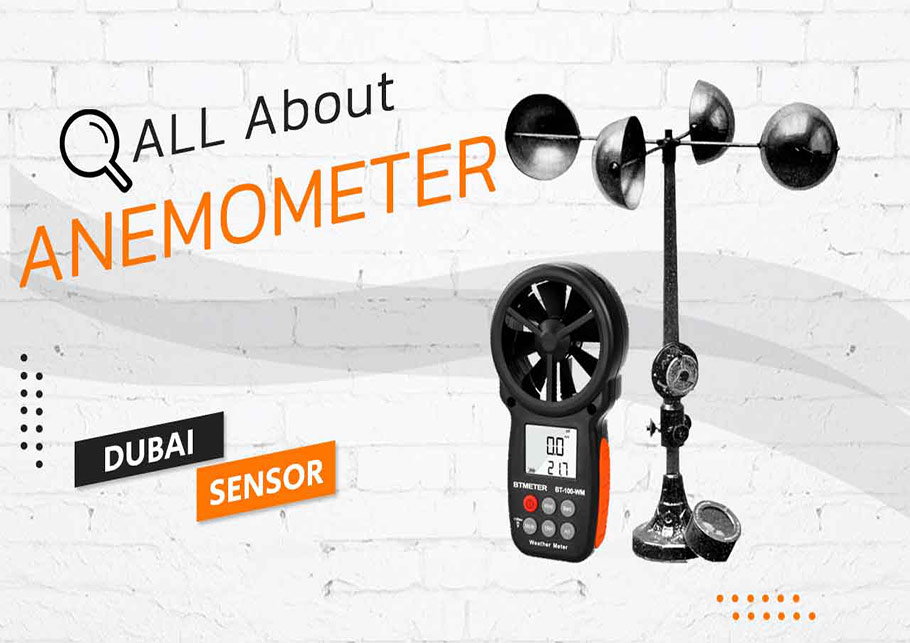The Function of an Anemometer in Improving Security for Outdoor Activities
The Function of an Anemometer in Improving Security for Outdoor Activities
Blog Article
Checking Out the Functions and Advantages of Anemometers for Climate Lovers and Professionals
Anemometers stand as important tools in the realm of weather monitoring, catering to both enthusiasts and seasoned professionals alike. These devices use a home window right into the vibrant globe of wind patterns and rates, giving vital information for atmospheric analysis and forecasting. From cup anemometers to sonic anemometers, each kind brings its one-of-a-kind collection of advantages and applications, shedding light on various aspects of weather. As we explore the features and advantages of anemometers, a deeper understanding emerges not just of prevailing weather condition phenomena yet additionally of the more comprehensive ramifications for markets like wind power production and environmental study.
Relevance of Anemometers in Weather Condition Monitoring
Anemometers play an important role in climate monitoring by giving precise dimensions of wind speed, assisting in projecting and understanding weather patterns. These tools, ranging from typical cup anemometers to modern ultrasonic anemometers, are necessary for meteorologists, researchers, and weather lovers alike. By measuring wind speed, anemometers aid in figuring out the intensity of weather condition phenomena such as hurricanes, twisters, and tornados. Additionally, they offer useful data for air travel, maritime operations, and various industries that are sensitive to wind problems.

Kinds of Anemometers and Their Applications
The most typical types of anemometers consist of cup anemometers, vane anemometers, hot-wire anemometers, and ultrasonic anemometers. Cup anemometers are composed of three or 4 cups installed on straight arms that rotate with the wind, gauging its speed. Vane anemometers, on the various other hand, use an openly turning vane to align with the wind direction, giving both wind speed and instructions dimensions.
Mug anemometers are appropriate and durable for basic weather condition surveillance, while vane anemometers are favored for directional dimensions. Ultrasonic anemometers are non-intrusive and supply high precision, often utilized in study and specialized weather tracking applications.
Benefits of Making Use Of Anemometers in Forecasting
In weather forecasting, the application of anemometers uses invaluable benefits for boosting the precision of weather condition projecting. Anemometers determine wind rate and instructions, giving crucial information for forecasting weather condition patterns. By integrating wind information into projecting models, meteorologists can much better understand the activity of climate systems, prepare for modifications in weather, and concern extra exact forecasts.
Furthermore, anemometers play an important role in assessing possible weather hazards. Keeping track of wind speeds aids forecasters predict severe climate events such as typhoons, tornadoes, and winter tornados with higher precision. This very early warning system makes it possible for authorities to issue prompt notifies and implement essential security steps, reducing the dangers to life and property.
In addition, anemometers help in optimizing eco-friendly energy manufacturing. By analyzing wind patterns, meteorologists can recognize suitable areas for wind farms and predict power output, adding to the efficient generation of wind power.

Anemometers in Wind Power Production
Offered the vital duty anemometers play in providing precise wind information for weather forecasting and threat evaluation, their relevance encompasses the realm of wind energy production. Anemometers are necessary tools in the field of wind power, where the dimension of wind speed and direction is vital for establishing the feasibility and efficiency of wind turbine setups. By accurately determining wind rates at varying heights, anemometers assist enhance the positioning and design of wind turbines to make best use of energy output.
In wind ranches, anemometers are purposefully positioned to accumulate real-time Find Out More wind information that is used to assess the potential power manufacturing of a website. This information contributes in figuring out the financial stability of wind power jobs and in forecasting energy generation to guarantee grid click site stability. Furthermore, anemometers help in monitoring wind problems to maximize wind turbine performance, avoid damage from high winds, and guarantee the safety of personnel working in the location of wind generators.
Enhancing Weather Condition Comprehending With Anemometers

Anemometers play an essential function in improving our understanding of microclimates. These localized climate condition can vary considerably from wider regional forecasts, making it important to have precise data for particular areas. anemometer. By strategically placing anemometers in various places, scientists can gather in-depth info on exactly how wind behaves in various surfaces, metropolitan atmospheres, or bodies of water
Moreover, anemometers add to enhancing weather condition forecasting models by providing real-time information on wind actions. This information is particularly important for predicting severe climate events, optimizing farming methods, and supporting industries like aeronautics and maritime navigating. In general, anemometers are indispensable instruments that allow us to dive much deeper into the intricacies of weather condition systems, ultimately leading to even more precise forecasts and better-informed decisions.
Final Thought
Finally, anemometers play an essential duty in weather condition surveillance and forecasting by measuring wind rate and direction. They are essential devices used by climate enthusiasts and experts to gather precise data for anticipating weather patterns and analyzing potential influences. Anemometers also have applications in wind energy manufacturing, further highlighting their relevance in both meteorology and sustainable power industries. Generally, anemometers contribute to boosting our understanding of weather sensations and boosting forecasting abilities. anemometer.
From cup anemometers to sonic anemometers, each kind brings its one-of-a-kind set of applications and benefits, losing light on numerous aspects of atmospheric problems. These tools, varying from traditional cup anemometers to contemporary ultrasonic anemometers, are crucial for meteorologists, researchers, and climate fanatics alike. The most usual types of anemometers include cup anemometers, vane anemometers, hot-wire anemometers, and ultrasonic anemometers. Cup anemometers are appropriate and robust for general weather condition surveillance, while vane anemometers use this link are preferred for directional dimensions. Anemometers are essential tools in the area of wind power, where the dimension of wind speed and instructions is vital for establishing the usefulness and performance of wind generator installments.
Report this page